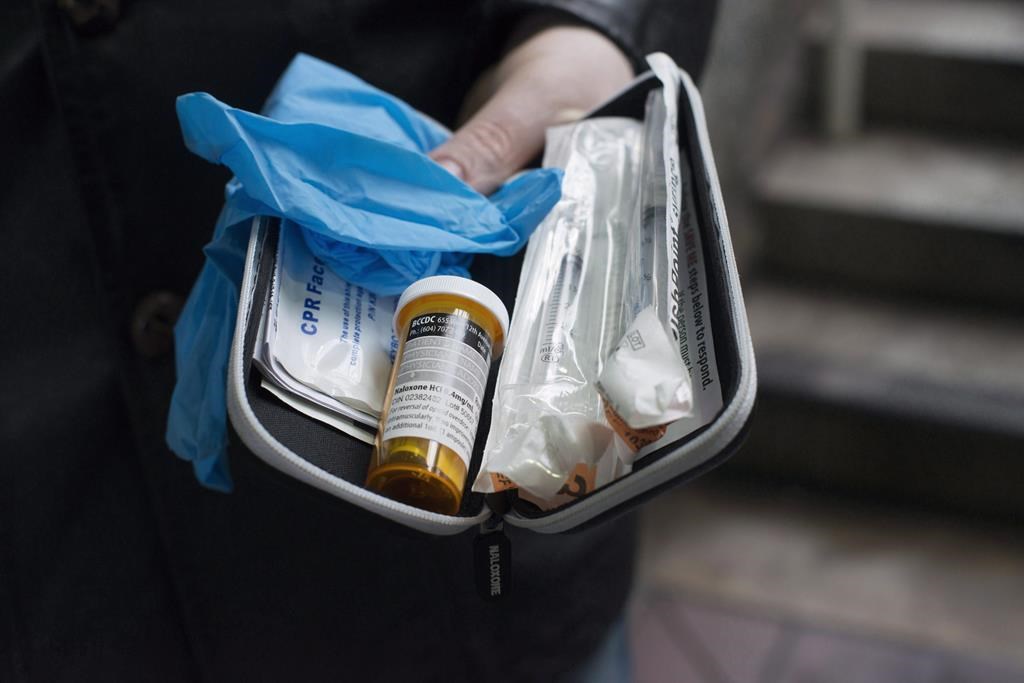As the holiday season rolls in, Saskatchewan’s overdose deaths are on track with the 2021 numbers, potentially ending the year with more deaths than the last.

The Saskatchewan Coroner’s Report up to Nov. 30 says there have been 395 drug toxicity deaths in the province, 171 of those are total confirmed drug toxicity deaths, and 224 are suspected drug toxicity deaths.
This puts the province behind the 2021 numbers by 15, with 410 deaths being reported, 398 of which are confirmed.
Kayla DeMong with Prairie Harm Reduction says there is a chance of overdose deaths rising over the holiday season.
“The holiday season can be very difficult, and as we see lots of closures over Christmas and service restrictions, there always is a risk for things to increase. It’s the same anticipation we have every year,” DeMong said.
Fentanyl and acetyl fentanyl are identified in both years as the leading drugs identified in the confirmed deaths.
People in their 30s, 40s and 50s make up the bulk of the confirmed drug toxicity deaths this year.
The majority of these deaths are being reported in Regina and Saskatoon, with 36 reported in Saskatoon and 73 reported in Regina.
DeMong said people who use drugs or people who know others who use drugs should get naloxone kits and training.
- Posters promoting ‘Steal From Loblaws Day’ are circulating. How did we get here?
- Canadian food banks are on the brink: ‘This is not a sustainable situation’
- Video shows Ontario police sharing Trudeau’s location with protester, investigation launched
- Solar eclipse eye damage: More than 160 cases reported in Ontario, Quebec
She added naloxone kits can be picked up from Prairie Harm Reduction, at most pharmacies and from the Opioid Assisted Recovery Services clinic.
“Get that training, get those resources in place just in case.”
Troy Davies, director of public affairs for Medavie Health Services West, says they used to only receive calls on holidays and weekends, but now they’re seeing calls daily.
“I know every year we release our amount of Narcan administrations we give, and we’re going to do that again here at the end of the year, we’re just tabulating that right now. We assume we’re either at or more than what we were for last year,” Davies said.
He said in the past you’d see more suicides, intoxication and depression during the holiday season, but says now it doesn’t really matter.
Davies said it has helped to have bystanders, police, firefighters and health officials administering Narcan.
He suggests people check on their neighbours this holiday season, noting that it can be a stressful time for many.
“In my 27 some years’ experience in EMS, I’ve (responded to) six suicides over the Christmas holidays. It’s that time of year where there’s a lot of depression and some stressful situations for some people.”
“A lot of people forget about seniors. If you have a neighbour, a lot of seniors don’t have family and just checking in and knocking on a door, seeing how they are doing, that’s the good neighbourly thing to do.”
He added that the province has gotten proactive rather than reactive over the past 18 months when it comes to recognizing overdoses and mental health, but stressors like the pandemic, inflation and the cost of living have been affecting people.
DeMong says changes still need to be made, adding she expects the same kind of results next year.
“I think this is the reality of the fact that we haven’t seen any real changes this year, and again, year-over-year, we’re not seeing the investment that is needed in the communities to really address overdose numbers.”
DeMong said overdose deaths are a result of a toxic drug supply, and that there are no safe supply options in the province.
She added that Saskatchewan doesn’t have any safe supply clinics, safe consumption sites in the province remain unfunded and access to resources comes with a long wait time.
“We don’t have access to resources. It’s still months and weeks and years of waiting for mental health and substance use support. And so, without an investment across the board, looking at the full spectrum and continuum of care, we’re going to see this year over year.”







Comments